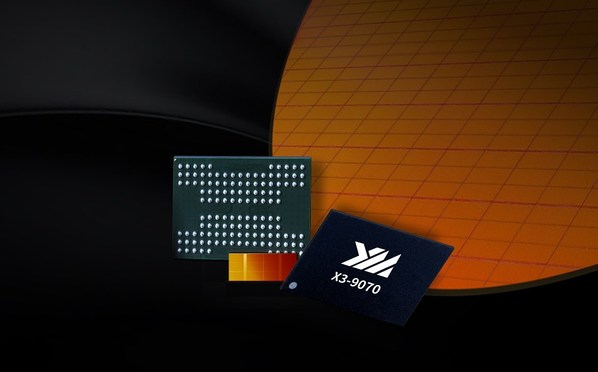
Although Yangtze Memory Technologies Co. (YMTC) has been mass-producing its 232-layer 3D TLC NAND for well over a year now, we rarely get to see this type of memory in action since it looks like it is mainly used in products that are sold in China. But perhaps we will finally experience it in a device that will be available globally. That device is Xiaomi's recently announced 14 Pro smartphone, reports BusinessKorea, and it may feature the world's highest-performing smartphone storage subsystem.
The Xiaomi 14 Pro is one of the most capable flagship smartphones released this year. The handset is based on Qualcomm's Snapdragon 8 Gen 3 application processor (one Cortex-X4 core at 3.30 GHz, five high-performance Cortex-A720 cores at 3.20 GHz, two Cortex-A520 at 2.30 GHz, and Adreno 750 graphics implemented using TSMC's N4P node) that is mated with 12 GB or 16 GB of LPDDR5X memory, and an up to 1 TB UFS 4.0 storage subsystem allegedly relying on YMTC's 232-layer 3D NAND memory with a 2400 MT/s interface.
YMTC offers at least two products based on 232-layer 3D NAND production technology: its 1Tb X3-9070 3D TLC NAND device featuring six independent planes and its 1Tb 3D QLC NAND IC featuring four independent planes. Both feature the company's proprietary Xtacking 3.0 architecture and a 2400 MT/s interface, which makes them suitable for the best SSDs featuring a PCIe 4.0 or PCIe 5.0 interface. Meanwhile, the six-plane 3D TLC device is obviously faster than the quad-plane 3D QLC device.
We do not know which YMTC's 232-layer 3D NAND devices are used by Xiaomi for its flagship 14 Pro smartphone (and we do not know if they are used because the information comes from an unofficial source), but a 16-bit NAND device with a 2400 MT/s interface speed can theoretically transfer up to 600 MB of data per second.
Now, since we are talking about 256 GB, 512 GB, and 1 TB UFS 4.0 storage subsystems (employing two, four, and eight 1Tb ICs), we may reasonably expect the first one to boast an up to 1.2 GB/s sequential read/write speed, the second one to offer an up to 2.40 GB/s sequential read/write speed, and the third one to provide up to 4.80 GB/s sequential read/write speed. The latter is the performance level of a good desktop-grade SSD, though we can only wonder in which use cases this level of performance can bring real-world benefits.
If the information about the usage of YMTC's 232-layer 3D NAND devices in the Xiaomi 14 Pro smartphone is correct, then the handset may well have the highest-performing storage subsystem in a smartphone.







